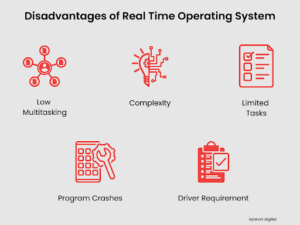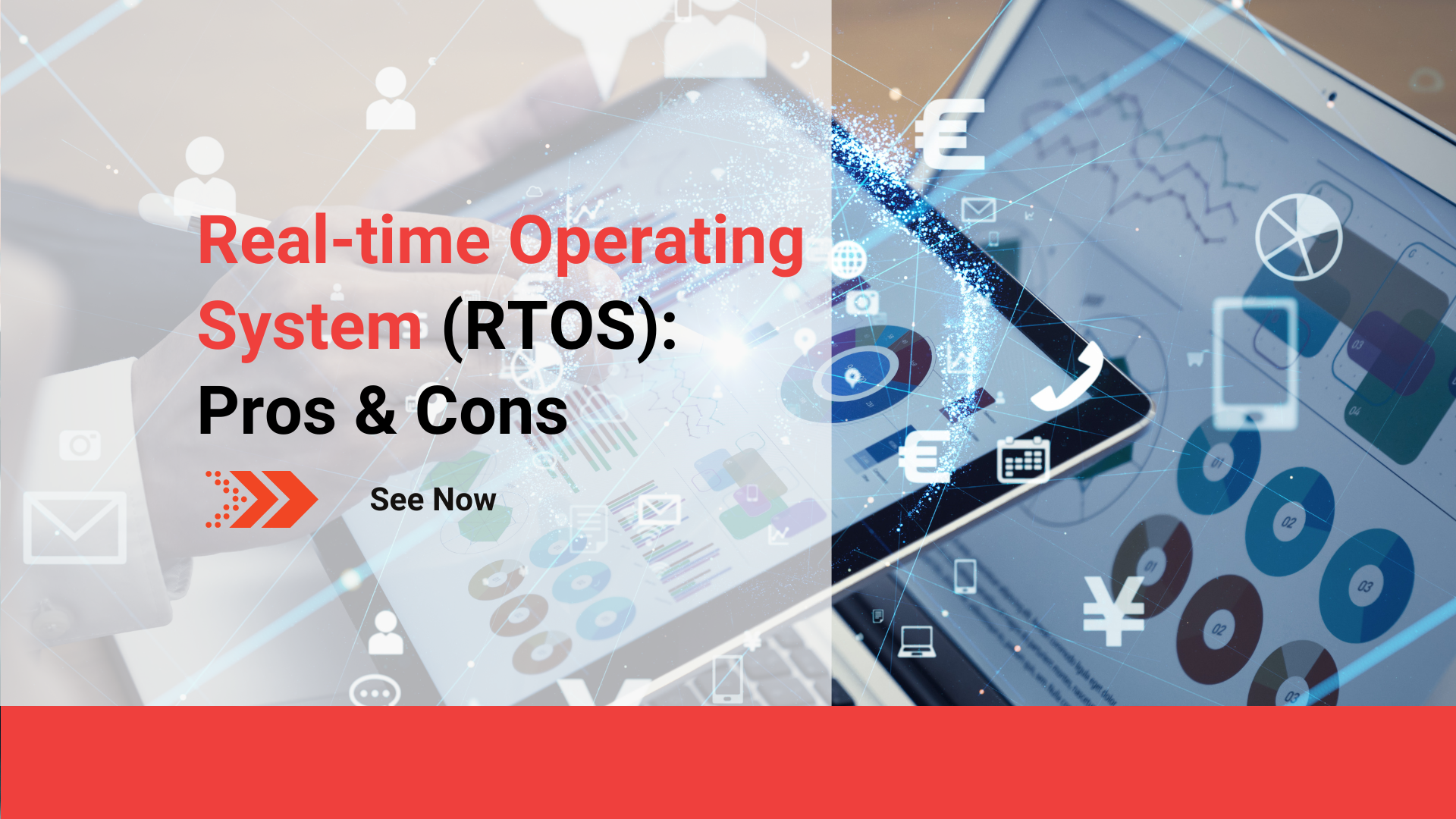1. Real-Time Operating Systems, what is it?
Real Time Operating System (RTOS) is a kind of system software that is designed for the purpose of performing different tasks simultaneously along with real time output. There is a set of applications where the operations are executed on time so the activities in an external system can be run in real time operating systems. The quantitative expression of time is used to analyze the system’s performance. Even if the system undergoes the same failure on different occasions, the results will stay the same.
2. Types of Real Time Operating System
At a given time, only a single task can be executed by a CPU. However, by switching tasks simultaneously, a real time operating system creates an illusion of multiple program executions. Based on the type of execution, there are 2 types of real time operating systems.
- A Hard RTOS is a system in which a single failure to meet the deadline may bring about complete or appalling system failure. It delivers results showing exact execution time and exact output and results on required time.
- On the other hand, a soft real-time system places less importance on time and accuracy. It is a system where one or more failures to meet the deadline are not considered complete system failure, but that performance is seen to be degraded.
3. Advantages of Real Time Operating System

- Maximum Consumption
RTOS gives maximum consumption of the system, and ensures that the system consumes more resources while keeping all devices in active state. As a result, a system using RTOS experiences little or no down time. Besides, hosting companies can achieve maximum outputs while using RTOS
- Task Management
A real time operating system typically takes a small amount of time to shift tasks. For instance, it takes about 10 microseconds in shifting one task to another in older systems. But in the latest systems, it takes 3 microseconds. This type of faster task management ensures critical processes can be achieved on time.
- Efficiency
A real time operating system pays attention to one application that is running at a given time. It usually keeps other applications residing in the waiting stage. Therefore, the critical tasks can be processed on time within the given deadline for achieving exact results on current execution work.
- Availability
RTOS is a system which is available 24/7 because it does less task shifting and gives maximum output. Hence, it can be best used for applications that need to perform always. Furthermore, a RTOS system has the ability to support different MCU platforms.
- Reliability
Real time operating systems, especially those which are of hard RTOS are completely free of errors. It ensures a better way of handling errors. Besides, operating systems experience an issue known as jitter in which the amount of errors between subsequent loops is measured. If programmed correctly, a RTOS can be optimized in a way that it undergoes less amount of jitters.
4. Disadvantages of Real Time Operating System

- Low Multitasking
Although a RTOS is capable of concentrating on targeted applications, they are designed to run only a few tasks and stay focused on them. Therefore, it is not recommended for systems that require multitasking due to poor thread priority.
- Complexity
Complex algorithms are behind a RTOS interface to achieve a desired output. For a normal user, it is difficult to write these algorithms, as only an expert developer can understand and write them.
- Limited Tasks
To satisfy the requirement of maintaining accuracy and reducing errors, a RTOS pays attention to one application at a given time. The low priority tasks need to be on waiting. There is no time limit in how much time they will be on standby.
- Program Crashes
A real time operating system can frequently experience program crashes. Unlike a regular O/S, a RTOS is not able to efficiently separate memory domains, which leads to difficulty for processes to address them.
- Driver Requirement
Signal interruptions continually happen in a real time operating system. Hence, driver installation is required on the computer in order to achieve steady speed. Whenever there is an interruption, a RTOS will be able to respond fast to interrupts with the help of drivers.
The popularity of Real-Time Operating Systems has been continuously increased for usage across all walks of life both at home and commercially. Kyanon Digital hopes this article will provide useful information, so that when making a decision related to adopting a Real-Time Operating System, you can consider its benefits and limitations to make the best choices.


